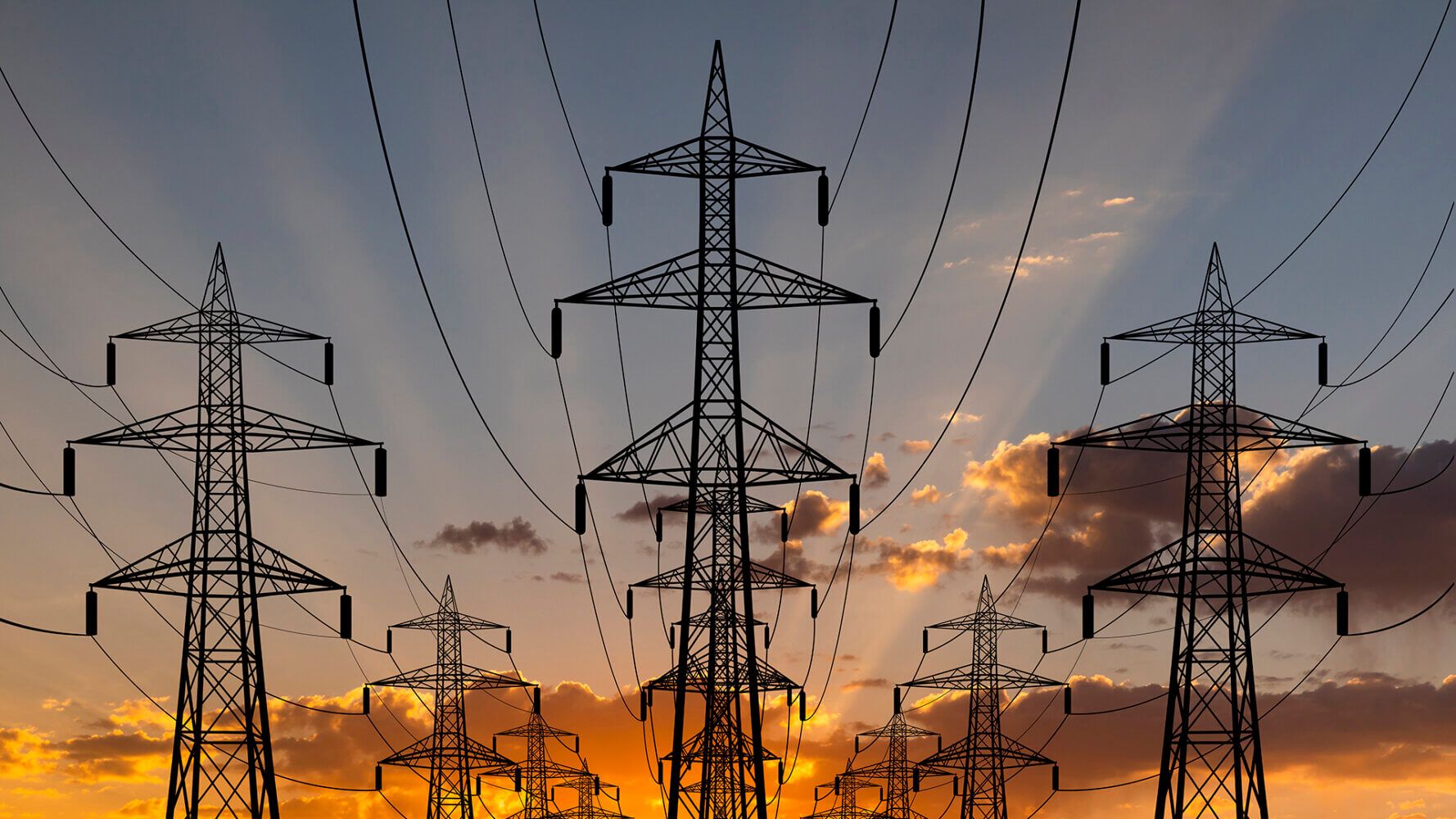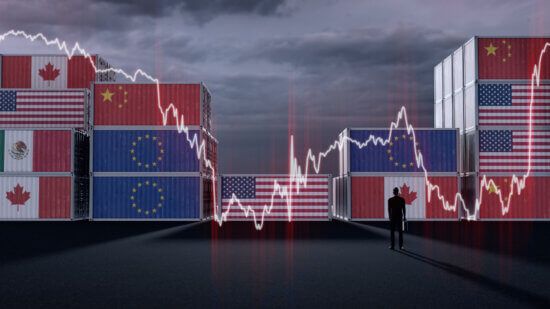
The electrification of everything has exposed America’s antiquated power grid. As an active investor, we see selective opportunities ahead.
In a world increasingly reliant on electricity, power grids face unprecedented challenges, ranging from age to overuse to the mandated electrification of everything. In this article, we begin with: How do we prepare our electric grid for the anticipated surge in demand as we move, willingly or unwillingly, towards a future dependent on electricity? As active investors, we also examine the investment opportunities surrounding this transformation.
The Paradigm Shift Towards Electrification
Electricity demand is projected to accelerate over the next several decades. In a recent interview, Elon Musk highlighted this transformative vision: a future where electricity becomes the primary energy source for almost everything. Currently, only about one-third of total energy demand is met by electricity.
This represents a monumental paradigm change, especially in developed markets like the United States, where annual growth in electricity demand has been relatively steady at around 1% for the past few decades. Going from an industry accustomed to minimal change to a surge in demand over the coming decades represents a significant challenge.
U.S. Electric Power Capacity Forecast 2021-2050
Source: Energy Information Agency
Of course, whether electricity will become our predominant energy source remains uncertain. But the direction is clear: no matter what, we are heading toward a more electrified future. In our research, we’ve realized that major utility company CEOs don’t all share Mr. Musk’s bold prediction, but they are not dismissing the possibility either. But it’s important to remember that the utility industry, historically characterized by cautious and conservative approaches, finds adapting to swift and transformative change challenging.
Preparing for an Electrified Future
As investors, we emphasize the need to consider a range of potential outcomes carefully. While Mr. Musk’s prediction may be controversial, we cannot dismiss this possibility. As investors looking for opportunities, there are several key factors to consider:
- Infrastructure Investment: Significant infrastructure investments are required to accommodate the increased demand for electricity. This investment includes upgrading power generation, transmission, and distribution systems to handle the increased load.
- Grid Resilience: With the growing importance of electricity, ensuring the grid’s resilience becomes paramount. We must prepare for extreme weather events and cyber and physical threats to maintain a reliable power supply.
- Energy Storage: As demand grows, efficient energy storage solutions will play a critical role in stabilizing the grid and ensuring a consistent power supply.
- Policy and Regulation: Governments and regulatory bodies must adapt more streamlined policies and regulations to encourage and support electrification efforts while ensuring affordability and accessibility for all.
- Public Awareness: Educating the public about the benefits and obstacles to electrification can help garner support for the necessary changes.
Increased Reliance on Aging Infrastructure and an Unreliable Grid
The aging infrastructure that comprises the grid, some of which date back more than a century, is the most prominent factor behind its unreliability. The grid has seen little significant change or innovation during that time. Even a figure as iconic as Thomas Edison would find much of the current American electrical infrastructure quite familiar.
In other words, the electric grid, increasingly fundamental to modern life, has seen minimal change and only incremental innovation. With the potential for increased demand over several decades, the aging grid’s fallibility is both a significant concern and an opportunity for investors.
Another issue contributing to grid unreliability is the occasional mismatch between supply and demand. Natural disasters, including ice storms, hurricanes, and wildfires, further exacerbate grid reliability issues. These events have led to more frequent and widespread power outages, some attributable to our growing singular reliance on solar and wind generation, such as frozen wind turbines. In some cases, utilities must act proactively or respond to safety concerns by shutting down power in affected areas.
Understanding the Grid’s Complexity
The grid is often referred to as a single entity, but we can break up the grid into two components:
- Generation and Transmission Lines: This is the upstream stage where high-voltage, direct current transmission lines transport electricity from generation sources to substations closer to population centers.
- Distribution Networks or Utility-to-Consumer Connections: Distribution lines then carry electricity from substations to homes and businesses, essentially serving as the “last mile” of electricity delivery.
The interconnected nature of the grid, which extends from large-scale infrastructure to individual consumers’ electrical connections, underscores the importance of investing in the grid to make it more reliable, increase its capacity, and ensure it can withstand the challenges posed by changing climate conditions. This investment theme revolves around renewing the grid’s infrastructure and hardening it to cope with natural disasters. To this end, there are several challenges to address, and each of these are opportunities for active asset managers to identify from an investment perspective.
Challenges in Transmission and Distribution
Our world’s electrification and the transition to renewable energy sources present multifaceted challenges and investment opportunities. Improving the reliability and capacity of distribution and transmission infrastructure is vital to ensuring a resilient and efficient electric grid. As the world transitions towards clean energy, strategic investments in grid infrastructure will play a pivotal role in shaping the future of energy distribution and consumption.
There are entire regions of the nation where distribution infrastructure was never intended to handle prevailing and still rising consumption levels, particularly in areas with little to no air conditioning requirements, like the Pacific Northwest, Upper Midwest and Northern New England, to name a few. A local example is Los Angeles, where air conditioning and other power-intensive devices are commonplace. But distribution infrastructure built nearly a century ago struggles to meet prevailing demand, never mind future demand, as California prepares to ban the sale of combustion engine auto sales by 2035. Pedestrians in older neighborhoods can hear the lines crackle and sizzle above them as the infrastructure struggles to handle today’s power demand.
As the focus shifts from hydrocarbon-based power generation to renewables, the location of renewable energy sources becomes crucial. Many renewable facilities are situated in remote areas with low population density, such as the deserts of the Southwest and the prairies of the Midwest. Substantial investments in new transmission lines are required to ensure efficient power transmission and distribution from generation sources to densely populated areas. It is one of the most critical bottlenecks holding back the “greenification” of the grid alongside the satiation of a prospective future increase in electricity demand.
It’s a Global Phenomenon
The transition to electrification and grid upgrades isn’t limited to the United States; these trends are happening globally, driven by factors like the need to reduce emissions, modernize infrastructure to meet demand and improve access to electricity.
Europe, where air conditioning is less prevalent than in the United States, is facing the same need to upgrade its grids to accommodate increasing demand. Another significant driver of electrification and grid upgrades is the campaign to decarbonize buildings. Buildings account for a substantial portion of emissions, approximately one-third, in Europe and the United States. As a result, there’s a growing interest in electrifying building heating systems. Heat pumps, for example, are increasingly being used to replace conventional gas-based heating systems.
People With and Without Electricity (Global)
Source: World Bank
The low electricity demand growth in developed countries is mainly due to energy efficiency improvements and changing consumption patterns. In contrast, the developing world is still increasing access to basic electricity, leaving them a fast-growing market for electrical spending. Electricity consumption in these regions is growing faster than in the developed world.
Investment Opportunities Across the Grid Value Chain
As global generalists, we seek to identify the best-positioned investment opportunities within a value chain with leverage to a specific theme, and our view of grid modernization opportunities is no different. Below, we describe just three of the opportunities we have identified with leverage to this theme:
- Electrical Products Manufacturers and Distributors: The manufacturers of specific components that are a critical bottleneck to expanding grid capacity, such as transformers, find themselves well positioned today and into the future to benefit from secularly rising demand for their products, which in some cases are in short supply. Moreover, there are also opportunities to invest in the distributors of electrical products that serve the utility industry, which broadly benefits from rising investment in the grid.
- Electrical Infrastructure Products: The manufacturers of steel transmission and distribution poles stand to directly benefit from rising investment in renewables, requiring increased transmission capabilities and assets in distribution grid reliability. While steel transmission and distribution poles may appear to be a simple product, it is a highly concentrated industry with specialized products that are an essential component of our grid infrastructure with attractive growth prospects ahead.
- Electrical Transmission and Distribution Contractors: The construction of electrical transmission and distribution infrastructure requires highly specialized labor, generally in short supply. An aging utility workforce makes the utility industry increasingly turn to third-party contractors to support their transmission and distribution maintenance and expansion plans. These highly specialized electrical transmission and distribution contracts may grow faster than the already brisk pace of expected growth for the industry as they account for a disproportionate share of incremental growth.
Conclusion
The electrification of our world is underway, driven by the push towards de-carbonization and the increasing availability of clean energy sources. As a result, the utility industry faces a significant shift in its operating paradigm. Careful planning, investment, and adaptation will be essential to meet these challenges and ensure a reliable and sustainable power supply. For an active asset manager such as Thornburg, the electrification dilemma requires our attention. It may present selective investment opportunities focusing on ensuring a resilient and adaptable grid that powers future innovation.
Discover more about:
More Insights

Mid-Year Global Equity Outlook: Diminishing U.S. Exceptionalism Leads to Non-U.S. Opportunities

Mid-Year Fixed Income Outlook: Uncertainty Yields Tight Credit Spreads

Tariffs, Stagflation, and the Fed: A Spotlight on Investors’ Most Pressing Questions

How We Invest: Active by Nature. Disciplined by Design.

Thornburg Income Builder Opportunities Trust Announces Distribution
